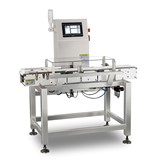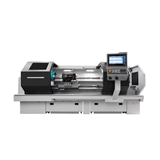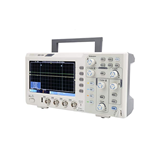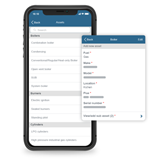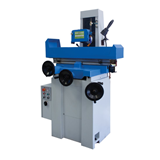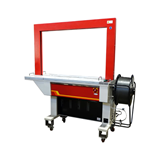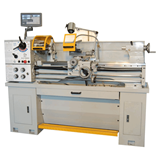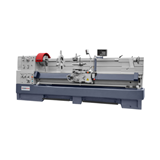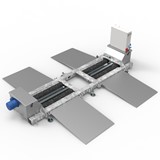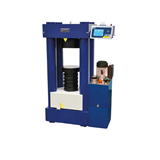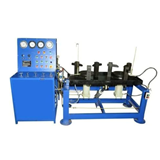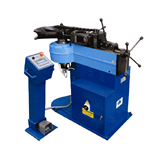Explore the benefits of digital twins for Australian industry. From ROI and integration to workforce training, see how this tech can enhance efficiency and decision-making.
Key takeaways
- What is a digital twin? A digital twin is a live, data-driven virtual replica of a physical asset or system that provides real-time insights into performance, health and operating conditions.
- Operational benefits: Digital twins cut unplanned downtime by up to 15%, boost asset efficiency, enable risk-free scenario testing and deliver clear cost-saving opportunities.
- Digital twins are transforming Australia’s mining, manufacturing, utilities, agriculture, and logistics sectors by enhancing asset performance, reducing downtime, and improving operational efficiency through real-time data and simulation.
- Implementation challenges: Success hinges on overcoming data-integration hurdles, cybersecurity requirements, workforce skills gaps and managing significant upfront investment.
- Platform selection criteria: Choose solutions that offer scalability, open interoperability, advanced real-time analytics and full compliance with Australian Privacy Principles and critical-infrastructure regulations.
- Future outlook: The next wave of digital twins will be AI-enhanced, sustainability-focused and backed by growing government incentives to accelerate Industry 4.0 transformation.
Introduction: Why digital twins matter now in Australia
In the rapidly evolving industrial landscape of Australia, digital transformation is essential for companies aiming to maintain competitiveness and resilience. With the twin pressures of rising operational costs and increasing complexity, from supply chain disruptions to workforce shortages, businesses must leverage advanced technologies to optimise every part of their operations.
Among the most promising of these innovations is the digital twin, a virtual replica of a physical asset or system that is continuously updated with live data. This technology has moved beyond theoretical concepts and pilot projects into practical use across sectors crucial to the Australian economy, including mining, manufacturing, utilities, and agriculture.
Australia’s mining sector alone accounts for nearly 10% of GDP and employs hundreds of thousands, making operational efficiency vital . The adoption of digital twins allows mining companies to monitor expensive equipment in real-time, predict maintenance needs, and avoid costly unplanned downtime. Similar benefits apply across manufacturing plants, water infrastructure, and logistics hubs.
With IDC Australia forecasting a 20% compound annual growth rate in digital twin investments over the next five years, it’s clear that this technology is transforming how Australian businesses operate. If you want your business to thrive amid these changes, understanding digital twins is no longer optional, it’s imperative.
What is a digital twin? A simple explanation
The concept of a digital twin can sound complex, but it boils down to this: A digital twin is a live, data-driven virtual model of a physical asset, process, or system.
Unlike a static 3D model or a simple simulation, a digital twin is connected to its real-world counterpart through a network of sensors, Internet of Things (IoT) devices, and software platforms. This allows it to continuously mirror the physical state and behaviour of the asset it represents.
Imagine you own a fleet of mining trucks. With a digital twin, you don’t just have a digital picture, you have a constantly updated dashboard that shows you each truck’s location, engine health, fuel consumption, and more. If one truck shows signs of a possible failure, you can act before it breaks down, saving downtime and repair costs.
This real-time connection between physical and digital worlds enables:
- Predictive analytics: forecasting problems before they occur
- Scenario testing: virtually trying out operational changes
- Optimisation: fine-tuning performance and maintenance
In short, a digital twin is your operational “second set of eyes,” powered by live data and advanced analytics.
Benefits of digital twins for industrial operations
- Predictive maintenance and downtime reduction
Downtime is costly. In mining and manufacturing, unexpected equipment failure can halt entire production lines or sites, costing thousands to millions daily. Digital twins use real-time sensor data combined with AI to predict when a machine is likely to fail. This lets you schedule maintenance proactively rather than reactively.
For example, BHP uses digital twins to monitor haul trucks at their Queensland sites. Their system analyses vibration, temperature, and hydraulic pressure data to identify early signs of failure. According to BHP, this has led to a 10% reduction in unplanned downtime, translating into multimillion-dollar savings annually .
- Enhanced asset performance and optimisation
Digital twins help you understand how assets behave under various conditions and allow you to optimise operations. By simulating adjustments in the digital environment, you can find the best parameters to maximise efficiency, whether it’s fuel use, throughput speed, or equipment lifespan.
This continuous feedback loop drives smarter decision-making, reduces waste, and improves sustainability, crucial as Australia’s industries face tightening emissions regulations.
- Improved design and planning through virtual testing
Before investing in physical changes, whether adding new machinery or modifying existing assets, digital twins allow you to simulate scenarios and assess impacts without risk or downtime.
This virtual testing speeds up project delivery and reduces costly mistakes, which is particularly valuable in capital-intensive sectors like infrastructure and manufacturing.
- Supply chain transparency and risk management
Australia’s vast geography and remote operations create complex supply chains vulnerable to disruption. Digital twins linked across the supply chain can track equipment status and location in real time, helping manage risks from delays or asset failures.
This transparency helps you respond faster to issues and maintain operational continuity.
Industries benefiting most from digital twins in Australia
Digital twins are proving transformative across several key Australian industries where operational efficiency, asset reliability, and data-driven decision-making are critical. Here’s where you’re most likely to see digital twin technology making a significant impact:
Mining and resources
- Australia’s mining sector, a powerhouse contributing nearly 10% of GDP, is one of the earliest and most enthusiastic adopters of digital twins. Mining companies use digital twins to monitor heavy equipment like haul trucks, conveyors, and processing plants in real time. This enables predictive maintenance that reduces costly downtime, improves safety, and optimises asset utilisation. For example, BHP’s digital twin system at Queensland sites cuts unplanned downtime by around 10%, translating to multimillion-dollar savings annually.
Manufacturing
- Manufacturers in Australia are leveraging digital twins to enhance production lines, improve yield, and lower energy consumption. The technology enables virtual testing of new layouts or machinery, reducing costly trial-and-error in physical settings. The CSIRO’s Industry 4.0 initiatives actively promote digital twin adoption, helping manufacturers innovate and stay competitive globally by improving quality and reducing waste.
Utilities and infrastructure
- Water, electricity, and transport infrastructure providers are increasingly adopting digital twins to monitor critical assets like pipelines, electrical grids, and rail networks. For example, Melbourne Water uses digital twins to detect leaks early and optimise pipeline maintenance, helping reduce water loss and costs. Digital twins provide comprehensive asset visibility and support compliance with stringent safety and environmental standards.
Agriculture
- Australian agribusinesses are beginning to use digital twins to simulate and optimise farm operations, crop health, and equipment performance. By integrating IoT sensor data with weather and soil analytics, farmers can better predict yields, schedule maintenance, and improve resource efficiency. While still emerging, this application holds significant promise for enhancing sustainability and productivity in regional areas.
Logistics and supply chain
- With Australia’s vast geography and complex supply networks, digital twins improve visibility and responsiveness across warehousing, transport, and distribution. Real-time tracking of vehicles and goods helps businesses manage risks, optimise routes, and maintain service levels despite disruptions, an increasingly important capability in the post-pandemic environment.
Key challenges and considerations when implementing digital twins
Data quality and integration hurdles
A digital twin is only as good as the data it receives. For many Australian businesses, integrating data from legacy systems, multiple sensor types, and enterprise resource planning (ERP) platforms can be difficult.
Ensuring data accuracy, consistency, and timeliness requires upfront investment in IT infrastructure and governance.
Cybersecurity risks and compliance
Digital twins introduce new cybersecurity risks due to their connectivity. Attacks on critical industrial infrastructure have increased, prompting Australian government agencies like the Critical Infrastructure Centre to strengthen regulations.
You must implement robust security controls aligned with frameworks like the Australian Cyber Security Centre’s Essential Eight and ensure compliance with privacy laws, including the Australian Privacy Principles (APPs) .
High initial investment and ROI uncertainty
Deploying digital twins involves hardware (sensors, networks), software licences, and skilled personnel. The upfront cost can be significant, especially for SMEs.
It's vital to develop a clear business case, identifying pain points digital twins can solve and estimating potential cost savings to justify investment.
Skills shortage in digital and IoT expertise
Australia faces a shortage of professionals skilled in IoT, data analytics, and digital engineering. Recruiting or upskilling staff is crucial for successful implementation and ongoing management.
Use cases and real-world examples in Australia
- Mining: BHP’s digital twin system monitors their haul trucks’ condition in real time. By predicting maintenance needs early, BHP reduces unplanned downtime and avoids costly breakdowns .
- Manufacturing: The CSIRO’s Industry 4.0 hub collaborates with local manufacturers to implement digital twins that optimise production lines, improve yield and reduce energy consumption .
- Utilities: Melbourne Water uses digital twins to monitor water pipeline integrity. Early leak detection and pressure monitoring have helped reduce water loss and maintenance costs .
- SME success: A Victorian precision engineering company deployed a scaled-down digital twin for machine calibration, resulting in a 15% throughput increase and better quality control.
Choosing the right digital twin solution: What to look for
- Scalability and interoperability: Your digital twin platform must integrate seamlessly with your existing systems (SCADA, ERP, MES) and scale as your operation grows. Avoid vendor lock-in with open standards.
- Real-time data analytics capability: Powerful analytics dashboards with AI-driven insights are essential for extracting value and making actionable decisions quickly.
- Cloud vs on-premise deployments: Consider data sovereignty laws and latency requirements. Cloud solutions offer scalability and remote access, while on-premise ensures local data control.
- Local support and compliance: Select vendors familiar with Australian regulations, privacy standards, and with a strong local support presence to ensure smooth implementation and troubleshooting.
Compliance, regulation, and data governance in Australia
Australia has robust data privacy and cybersecurity laws you must comply with when implementing digital twins:
- The Australian Privacy Principles (APPs) regulate personal and sensitive data handling, relevant if your digital twin collects employee or customer information.
- The Critical Infrastructure Centre mandates stringent cybersecurity controls for essential service providers, including many industrial operators.
- Industry-specific safety and environmental standards (e.g. AS/NZS 4801 for workplace safety, ISO 14001 for environmental management) also apply to equipment and processes represented by digital twins.
Ensuring your digital twin deployment complies with these requirements is essential to avoid regulatory penalties and safeguard reputation.
Cost considerations and budgeting for digital twins
Implementing digital twins involves several cost components that businesses must consider upfront to create a realistic budget and assess potential returns. Key cost areas include:
- Hardware: Sensors, IoT devices, networking equipment, and edge computing infrastructure to collect and transmit real-time data from physical assets.
- Software: Licensing fees for digital twin platforms, data analytics tools, and integration middleware. Some vendors offer subscription-based pricing models.
- Integration: Costs associated with connecting legacy systems (like ERP, SCADA, MES) and consolidating diverse data sources into the digital twin environment.
- Training: Upskilling staff on new software, IoT systems, and data interpretation is critical for effective use and maintenance.
- Maintenance and support: Ongoing expenses for system updates, cybersecurity measures, and vendor support.
For many Australian businesses, especially SMEs, the initial investment can seem significant. However, framing costs against long-term benefits such as reduced downtime, improved asset efficiency, and lower maintenance expenses helps clarify the return on investment (ROI).
Typical ROI timelines range from 12 to 36 months, depending on project scale and sector. Mining operations may see quicker returns due to the high cost of unplanned downtime, while manufacturing or utilities projects might require longer to realise full benefits.
To help offset costs, Australian businesses can explore financing options such as equipment leasing, vendor financing, or loans. Additionally, government initiatives like the Modern Manufacturing Initiative offer grants and support to encourage Industry 4.0 technology adoption. The R&D Tax Incentive may also apply if your project involves innovation or development.
Budgeting carefully and engaging financial advisors early will ensure your digital twin project is financially sustainable and strategically aligned.
Step-by-step implementation roadmap
Adopting digital twins is a complex but manageable process when approached in clear, phased steps. Here’s a practical roadmap tailored to Australian industrial operations:
- Initial assessment and goal setting
Identify the specific business challenges you want digital twins to solve, whether it’s reducing downtime, optimising maintenance, or enhancing supply chain visibility. Engage stakeholders across operations, IT, and finance to align objectives. - Data audit and infrastructure readiness
Evaluate your existing data sources, sensor coverage, and IT infrastructure. Identify gaps in data quality, connectivity, and system compatibility that may affect digital twin effectiveness. - Selecting technology partners
Choose vendors with proven digital twin expertise and experience in your industry. Prioritise those offering scalable, interoperable solutions and strong local support familiar with Australian compliance requirements. - Pilot project execution
Start small with a focused pilot, perhaps one critical asset or process. This allows you to test assumptions, measure impact, and refine workflows before scaling. - Scaling and continuous improvement
Once the pilot demonstrates value, expand the digital twin to other assets or sites. Establish continuous monitoring and feedback loops to evolve your twin’s capabilities, incorporate AI, and adapt to changing business needs.
Following this roadmap reduces risk, builds internal confidence, and maximises your chances of successful digital twin adoption.
Workforce training and change management
A common barrier to successful digital twin adoption is workforce readiness. It’s not just about technology, it’s about people.
Upskilling your existing staff in IoT systems, data analytics, and digital twin software is essential. Investing in targeted training improves user confidence, reduces resistance, and enhances your return on investment. Many Australian training providers and universities now offer Industry 4.0 courses and certifications tailored to manufacturing, mining, and utilities sectors.
Examples include TAFE NSW’s Smart Manufacturing training and RMIT University’s digital engineering programs. Partnering with these institutions or leveraging vendor-led training ensures your team acquires relevant, practical skills.
Change management is equally important. Introducing digital twins often requires shifts in operational processes and culture. Clear communication about the benefits, involvement of frontline workers in pilot phases, and leadership support help embed new ways of working.
By prioritising workforce development and managing change proactively, your business can unlock the full potential of digital twins and create a digitally skilled, future-ready team.
The future outlook: Emerging trends in digital twins
- AI and machine learning integration: As AI models improve, digital twins will autonomously optimise operations, detect anomalies, and even self-correct.
- Sustainability and carbon tracking: Digital twins will play a growing role in monitoring and reducing emissions, energy consumption, and supporting Australia’s net-zero targets.
- Government incentives: Programs such as the Modern Manufacturing Initiative and various state grants offer funding to support digital transformation projects, lowering barriers for adoption.
These trends highlight digital twins as a foundational technology underpinning future industrial competitiveness and sustainability.
Conclusion: How Australian businesses can start their digital twin journey
To harness digital twins effectively:
- Identify your highest-impact use cases, such as maintenance, asset optimisation or supply chain visibility.
- Build cross-functional teams involving IT, operations, and finance for holistic project planning.
- Start small with pilot projects to validate benefits and adjust before scaling.
- Choose technology partners with Australian expertise who understand your industry’s regulatory and operational context.
- Invest in training and upskilling your workforce to ensure long-term success.
By approaching digital twins strategically, your business can reduce costs, improve asset reliability, and gain a powerful competitive edge in Australia’s fast-evolving industrial sectors.







